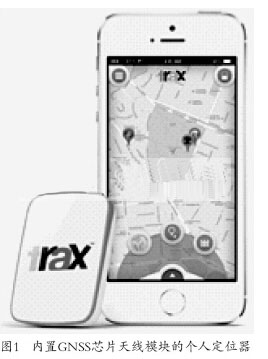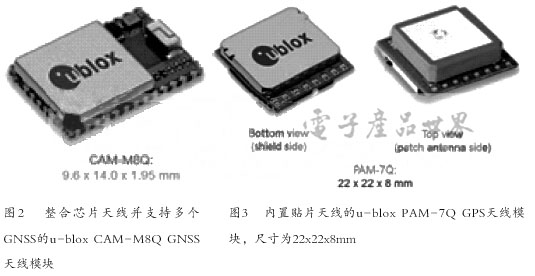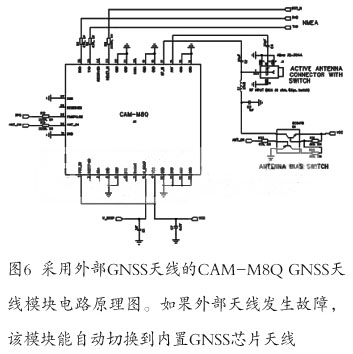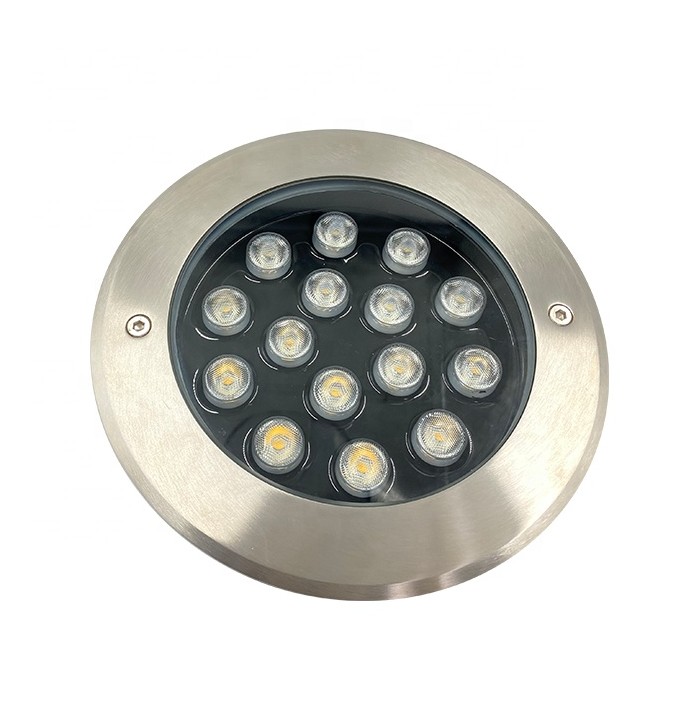In order to provide more attractive features, more and more end products have now integrated global positioning capabilities. In addition to familiar navigation systems, applications such as vehicle and asset tracking systems, personal locators, security systems, vending machines, health care monitoring, and sports and leisure equipment also require the use of Global Navigation Satellite System (GNSS) receivers.
Each GNSS receiver requires an antenna to receive weak satellite signals outside 20,000 kilometers. Since many customers do not have the expertise of RF/antenna tuning, the performance-optimized "GNSS Antenna Module" that integrates the satellite receiver chip and antenna on one module is a better solution. For devices that want to “immediately†have global positioning capabilities, these modules offer the benefits of fast time-to-market and streamlined logistics, providing a cost-effective solution.
GNSS antenna modules are also much smaller than GNSS modules with external antenna designs. This makes the GNSS antenna module with built-in chip antenna ideal for ultra-thin design and saves a lot of design trouble.
A typical and ideal application for GNSS antenna modules is personal and pet tracking equipment, which is a fast-growing market. These devices are extremely small in size and offer the best antenna performance in any orientation.
Another important feature of satellite receiver chips is the need for superior immunity to interference, as personal tracking devices typically include a cellular modem and may be placed in the same pocket as the mobile phone. Two important design criteria are: GNSS antenna modules with pre-tuned antennas should provide the best overall reception quality; integrated SAW filters need to provide good resistance to cellular noise.
Depending on the area of ​​use, the positioning module needs to support different satellite navigation systems, including GPS, GLONASS (Russia), Beidou (China) and QZSS (Japan). In addition, support for both satellite systems (eg GPS/GLONASS, GPS/Beidou, GLONASS/Beidou) increases positioning speed and reliability, as the chances of using at least four satellites to calculate a position increase.
Figure 1 shows an application example of a GNSS antenna module with a built-in chip antenna. Since the chip antenna is integrated inside the module, this personal locator is very thin and thin, and it can track and display the user's position through the web interface.

The device integrates u-blox's chip antenna module CAM-M8Q (Chip Antenna Module), measuring only 9.6 x 14.0 x 1.95 mm and supporting multiple GNSS. The chip antenna can handle all L1 frequencies from Beidou (1560 MHz) and GPS (1575 MHz) to GLONASS (1606 MHz). This surface mount module is also very thin to meet the customer's ultra-thin product design needs.
Be especially careful when designing the chip antenna module, as the PCB itself is part of the antenna as a whole (half dipole). Therefore, for optimal performance, vendor design support, including support for system integration, and application engineers with years of experience in chip antenna module design are important.
Another feature of the CAM-M8Q is that if the customer decides to use an external antenna, the module's internal chip antenna can be used as a backup. This feature works well when the main external antenna of the main selection may malfunction or be damaged. For example, the external antenna of the vehicle tracking system is likely to be damaged.
For GPS-only applications, the PAM-7Q (Figure 3) is popular because of its excellent mounting flexibility. It can be mounted directly into an existing design or soldered to a custom PCB via a pin-header. The PAM-7Q's patch antenna measures 18 x 18 mm and provides RHCP polarization that is not possible with smaller patch antenna assemblies.

Simple design and docking make installation costs to a minimum. This module is ideal for industrial and consumer applications that require small, fast and low cost GPS positioning.
Both modules are specially designed and tuned to provide optimum antenna performance in any orientation. At the same time, due to the integration of SAW filters, they also have excellent sensitivity and anti-interference characteristics.
Figure 4 shows the gain measurements of the GNSS antenna on three different planes. Note that the performance on the vertical plane is nearly the same. This shows that consistent antenna gain can be provided in the direction of the sky regardless of the orientation of the device.

These measurements were made by mounting the module on a ground plane of 80 x 40 mm, which is actually part of the antenna. The dark blue rectangle in the figure is the recommended antenna module mounting position.
The circuit schematics of Figures 5 and 6 illustrate the ease of design with the CAM-M8Q GNSS antenna module. The first schematic in Figure 5 shows a stand-alone solution with an internal GNSS antenna: only a few external passive components are required for conventional power supply filtering and protection. The figure also includes an optional power switch to turn the power on and off.

All positioning information is transmitted to the host processor via the 2-wire NMEA interface on pins 25 and 26; the module provides final positioning information without the need for host processing.
Figure 6 shows the design using an external GNSS antenna. When the external antenna is damaged or the connection is interrupted, the module can automatically switch to the internal GNSS chip antenna and continue to perform the positioning function. This feature is very useful in vehicle applications because the external antenna is likely to be damaged when an accident occurs in the vehicle.

LED Underwater Light simply refers to the light installed in the water. The appearance is small and exquisite, beautiful and generous, and the appearance is similar to some underground lights, except that there is an additional mounting chassis, Woneng LED technology lighting is called the fourth-generation lighting source or green light source, which has the characteristics of energy saving, environmental protection, long life and small size. When it is energized, it can emit a variety of colors, colorful, and is usually installed in a park or fountain.

Our other products range:LED Underground Light, LED Underwater Light, LED Wall Washer Light, LED Linear Light , LED Outdoor Flood Light, LED Garden Light , LED Landscape Light , LED Strip Light , Led Step Light etc.
LED Underwater Light
Oudoor underwater light, Inwater Light, Led Fountain Light,China Inwater Light manufacturer
SHENGYA LIGHTING TECHNOLOGY CO., LTD. , https://www.syalighting.com